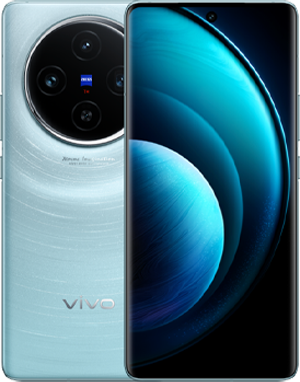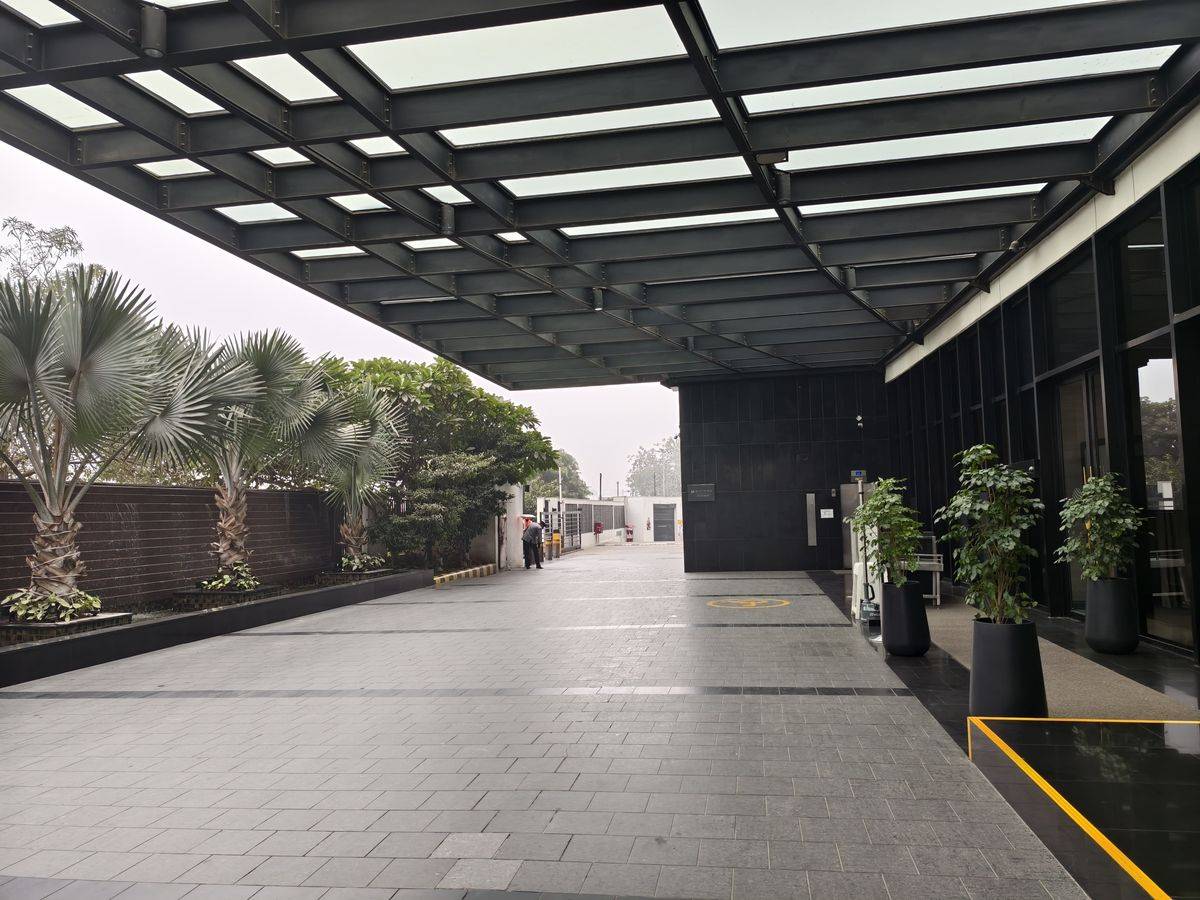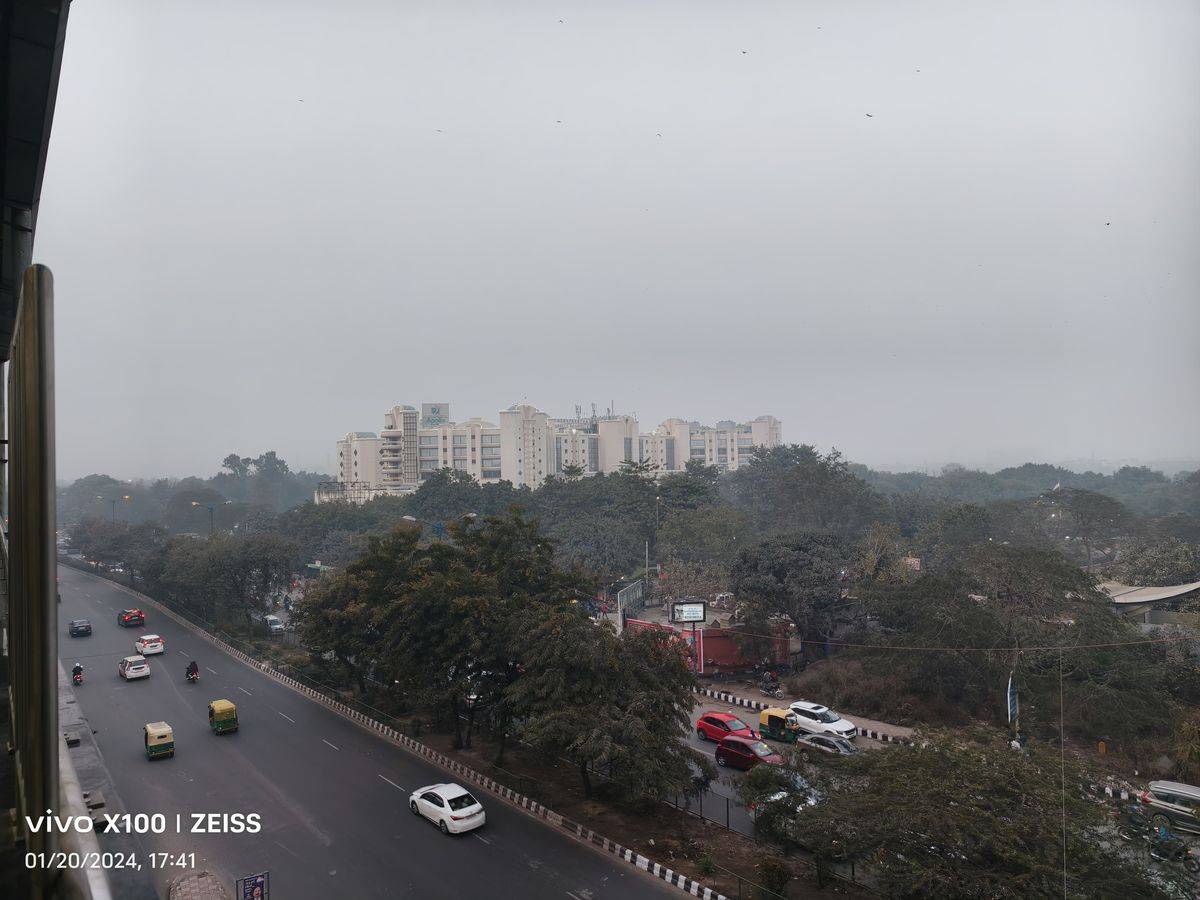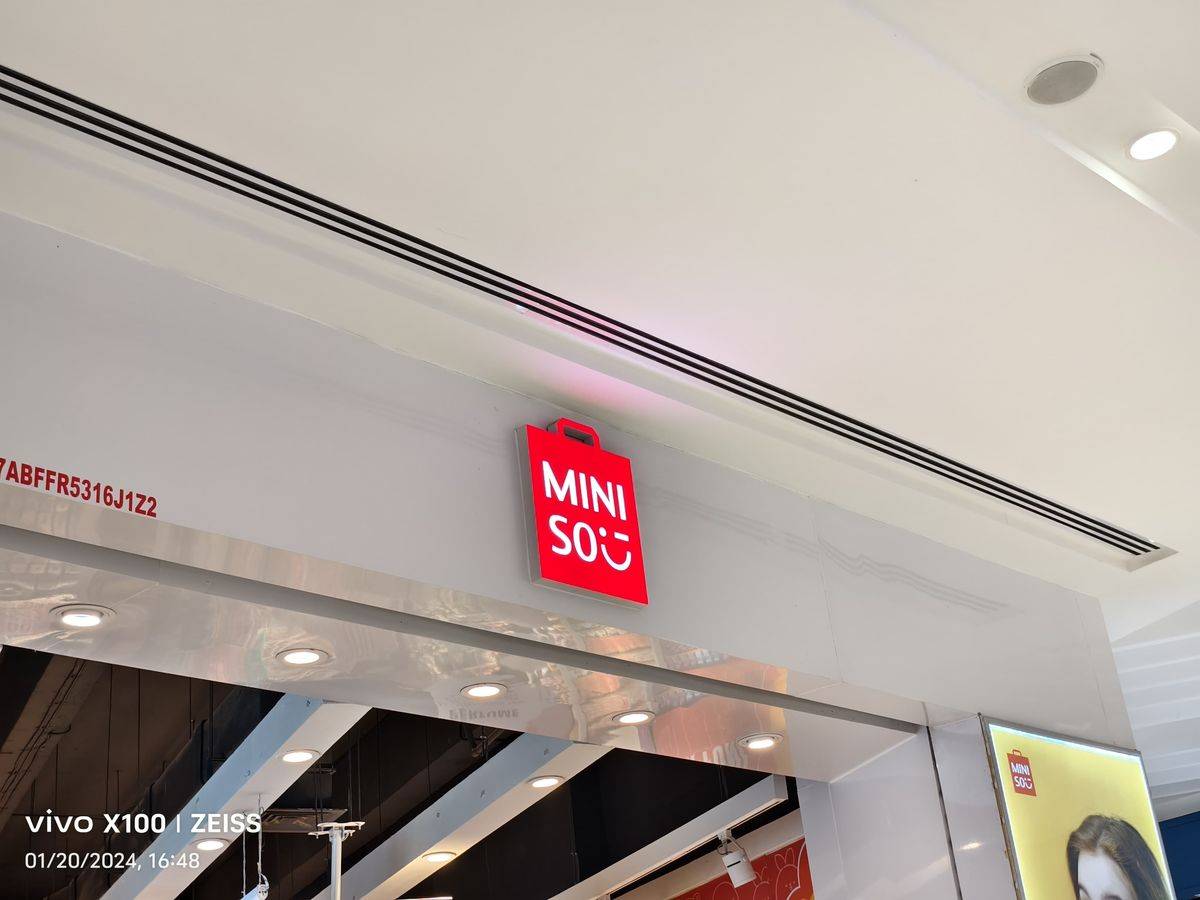Review Summary
Expert Rating
The Vivo X100 Pro received high praise in our review, and deservedly so. Now, it’s time to look closer at its younger sibling, the Vivo X100, which is approximately Rs 26,000 cheaper than the Pro model, despite sharing similar specifications. In this Vivo X100 short review, we tell you why the smartphone deserves a second look if you’re in the market for a camera-focused Android flagship under Rs 70,000.
Table of Contents
Verdict
The Vivo X100 delivers on its promises. The cameras are outstanding, the performance feels smooth, and the battery life is excellent, topped up by an impressive fast-charging solution. Additionally, the display offers an impeccable viewing experience. While the phone can be a bit slippery, the design is catchy and provides a good in-hand feel.
Design and display
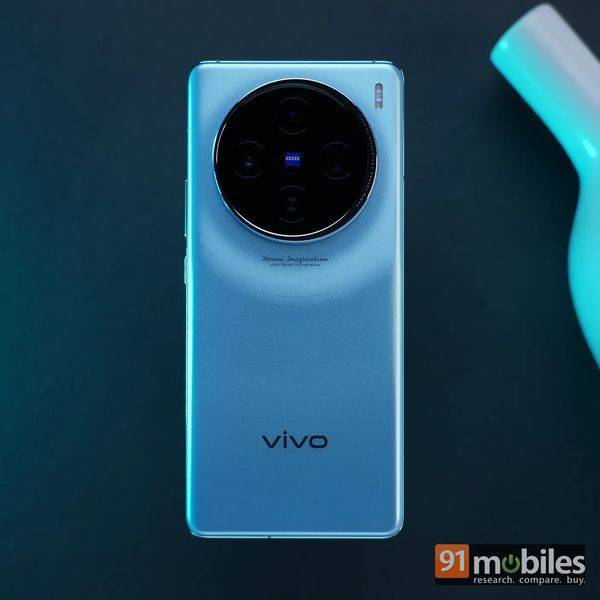
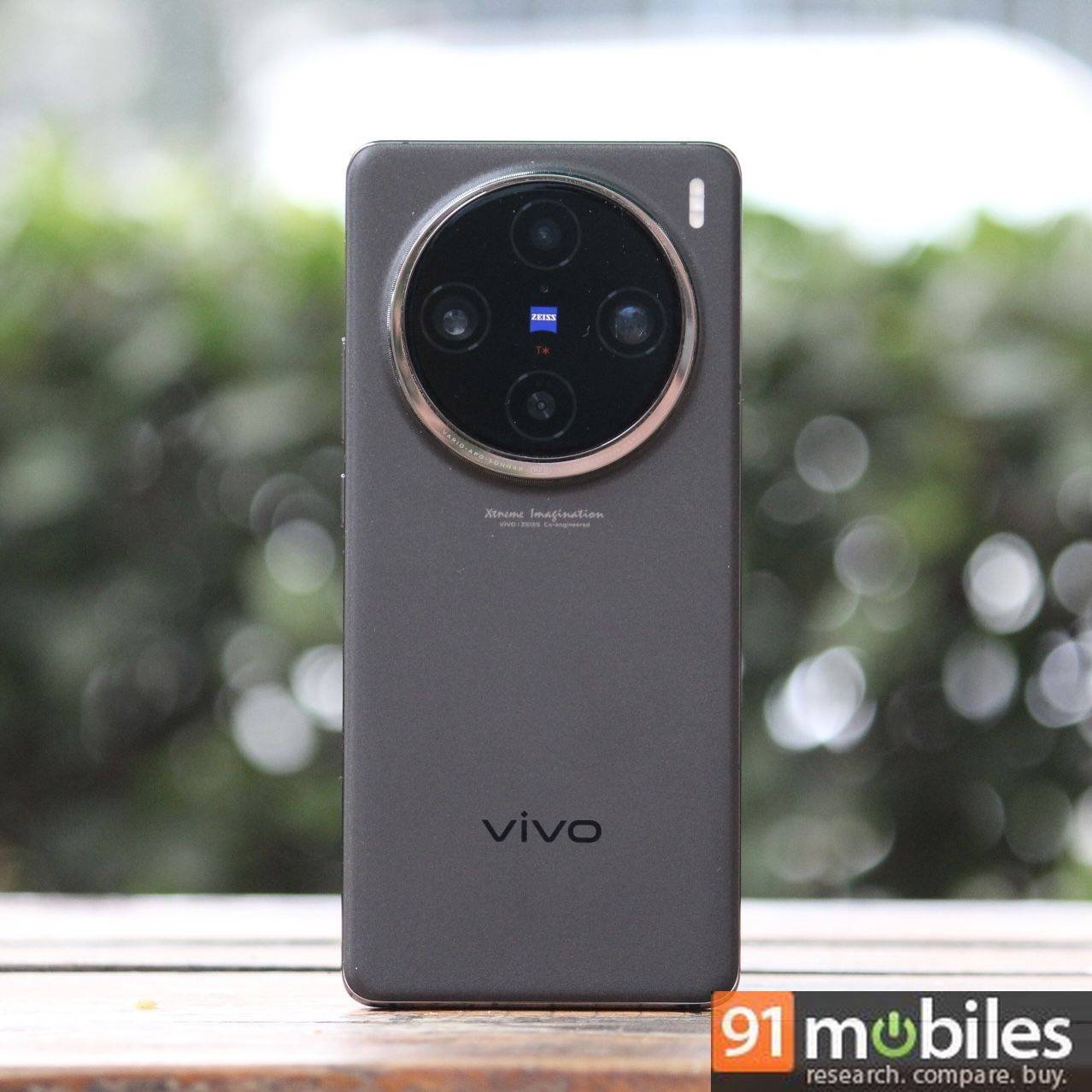
The Vivo X100 design can only be told apart from the X100 Pro primarily by the additional sunset orange colour variant of the latter. Other than that, it is the crescent metal ring around the camera module of these smartphones. On the X100 Pro, the crescent is positioned at the bottom of the module, whereas on the Vivo X100, it falls gracefully on the right side. I received the Startrail Blue colour variant of the X100 for review. The handset also comes in an Aestroid Black shade like the X100 Pro, visible in the image above. I admire the Aetroid Black more, but if you are into shiny colours, the Startrail Blue would be a good fit for you.
The Vivo X100 features a glass back with a matte finish and shiny arcs, giving it an aesthetically pleasing look while also preventing fingerprints and smudges. The phone also bears several markings, starting with Zeiss branding on the camera module and Vivo etched at the bottom. Although the markings seamlessly blend in with the design, they do appear a bit excessive.
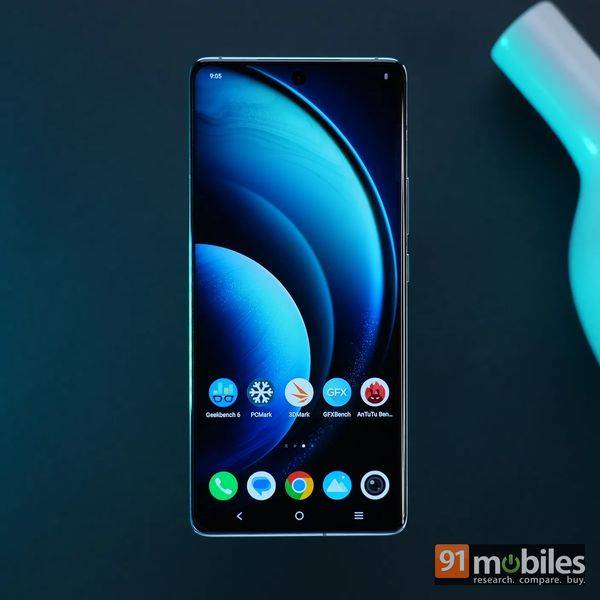
That said, the handset boasts a solid design with curved edges, which can get a bit slippery for people with sweaty hands. However, this issue can be solved with a case, such as the transparent one Vivo bundles with the smartphone. The button placements on the phone are on the right spine and within reach without performing finger gymnastics. The fingerprint scanner is underneath the screen. I do feel it could have been positioned better, as it’s not where the thumb generally falls on the screen while holding the device. Nevertheless, the scanner is quite seamless in terms of unlocking the device.
The Vivo X100 sports a 6.78-inch FHD+ AMOLED display with 3,000 nits peak brightness, 100 percent DCI-P3 colour gamut, and 120Hz refresh rate. Since it is an LTPO panel, the refresh rate can dynamically adjust on what’s on the screen, thus, saving some battery. The display ensures an impeccable viewing experience whether you are indoors or outdoors. The colours look punchy and vibrant, with deep blacks and excellent dynamic range. The immersive viewing experience is further heightened by the stereo speaker output and elegantly curved edges.
Cameras
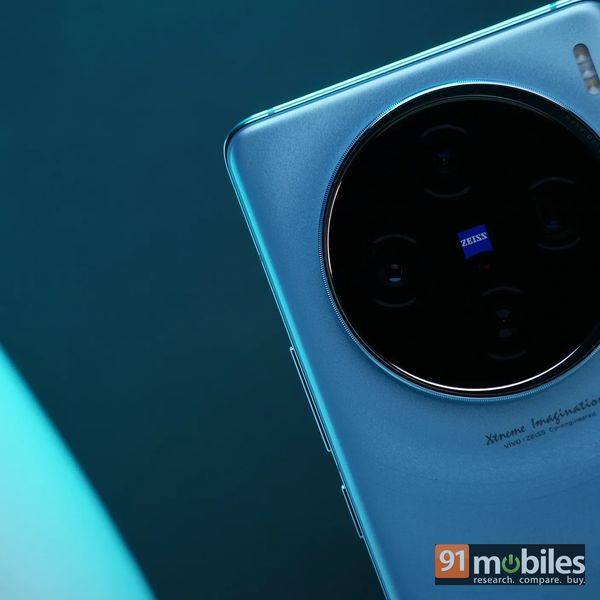
Now, coming to the main aspect of the phone – the cameras. The Vivo X100 ships with a triple rear camera setup comprising a 50MP primary sensor, a 50MP ultrawide lens, and a 64MP 3x periscope telephoto lens. Unlike the Pro variant, the vanilla X100 doesn’t have a floating telephoto lens which helps provide superior stabilisation. As a result, the handset can’t capture sharp images at zoom levels beyond 10x zoom. While there is a shift in colour when the viewfinder switches to a telephoto lens, the level of detail remains respectable at least in well-lit areas with 3x and 5x zoom. That said, the dynamic range remains could have been better. The finer details around the shadowy areas look underwhelming.
As for the 50MP ultrawide lens, it is adept at capturing pleasing images across various lighting conditions. There is noticeable warping around the edges of the frame, but the overall results are positive, with vivid colours and good exposure to details, particularly at the centre. The lens supports night mode to minimise the noise that comes with low-light shots. The 50MP primary camera is undoubtedly the star of the show here. It delivers incredibly sharp and crisp images, regardless of the lighting – be it low light or daylight. The dynamic range also impresses, and so do the colours – even if they appear a tad oversaturated.
The phone also delivers impressive portraits with different focal lengths, namely 24mm(1x), 35mm (1.5x),50mm (2.2x), 85mm (3.7x) and 100mm (4.3x). They work incredibly well on both human and animal subjects and nicely separate the foreground from the background. Despite all the positives, the handset could do with a slight improvement in edge detection. The Vivo X100 even provides several ZEISS Style Bokeh styles, such as Distagon, B-Speed, Biotar, Planar, and Sonnar, for different bokeh effects, which are worth checking out.
The X100’s Super Macro mode also deserves a mention here. The phone manages to click some sharp close-up images using the telephoto lens. Moving on to the front camera, the handset relies on a 32MP snapper positioned in the punch-hole setup for selfies and video calling. The quality looks decent, with some skin smoothening.
Performance and software
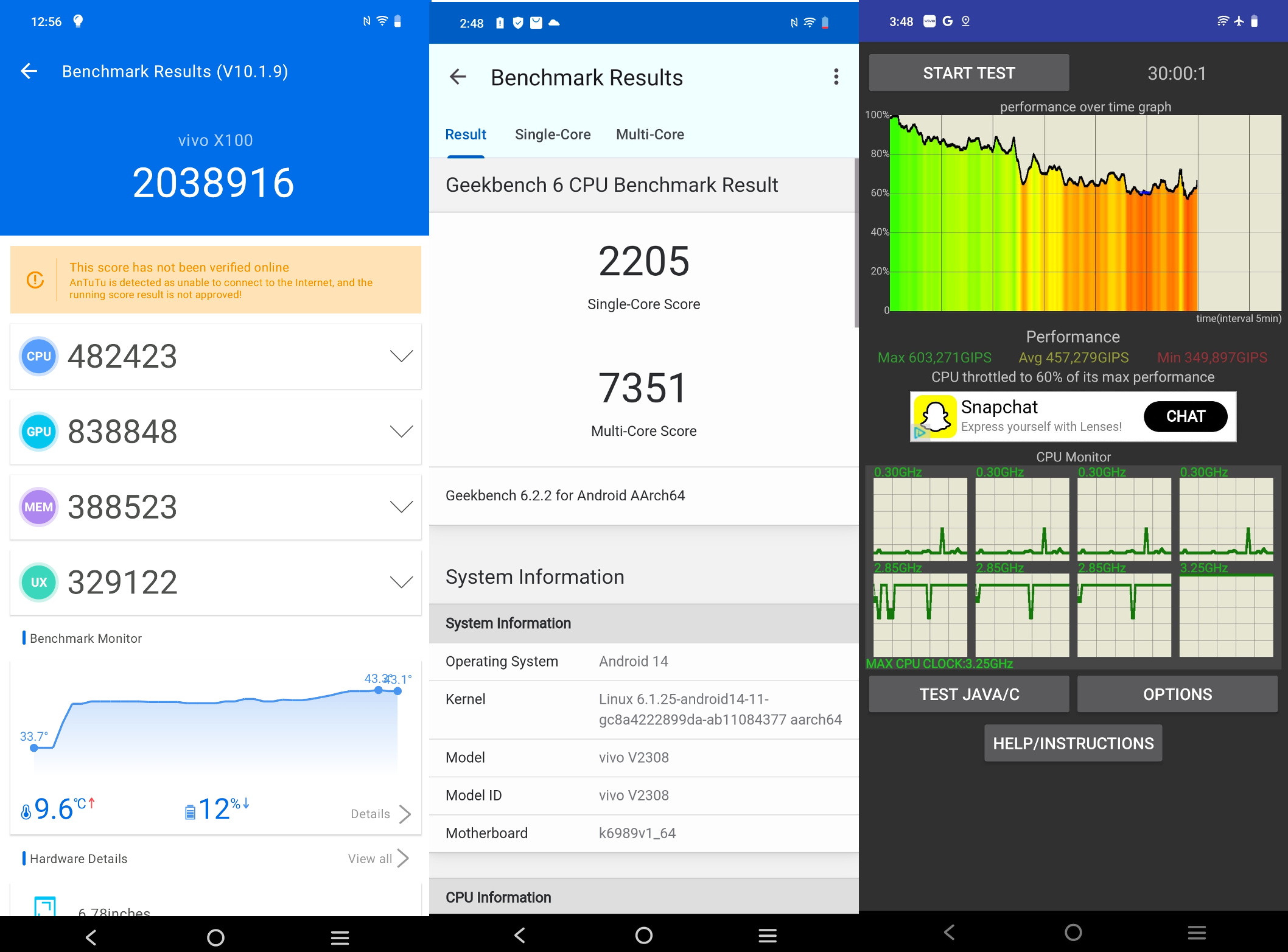
On the performance front, the Vivo X100 rocks MediaTek’s mightiest chipset to date, the Dimensity 9300, under the hood. It is paired with a custom V2 chip to improve image processing and up to 16GB LPDDR5X RAM + 512GB UFS 4.0 storage onboard. Pretty flagship-grade stuff here, ensuring a steadfast performance whether you are multi-tasking or gaming.
There were no instances of app crashes or screen freezes during our time with the device, despite running multiple apps in the background. While the handset ran BGMI with its highest graphics and frame rate settings admirably well, a slight increase in its thermals was noticeable. Even then, I didn’t notice much throttling on the device. On the CPU Throttle test; however, the Vivo X100 performance throttles a bit. That said, the phone surpassed the Snapdragon 8 Gen 3-powered iQOO 12 both on AnTuTu and Geekbench.
Software-wise, the Vivo X100 runs FunTouchOS 14 atop Android 14 out of the box. While the user experience is anything but stock Android, it can be customised to your liking with features such as a Material You-like theme, different clock styles on the lock screen, and an array of new always-on display widgets, among other things. Additionally, the few third parties that come pre-installed on the device are removable post-setup.
Battery and charging speeds
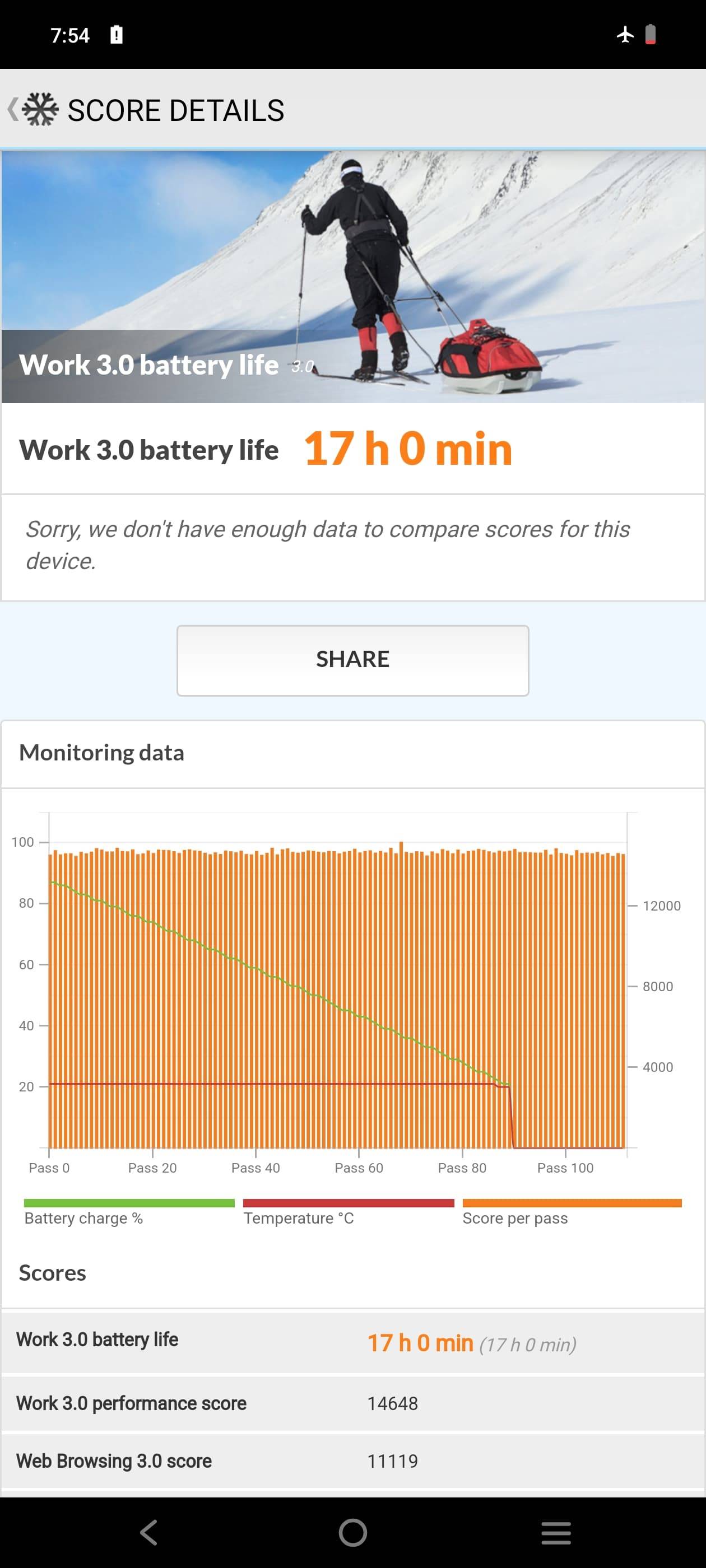
The battery on the Vivo X100 is a tad smaller than the X100 Pro. The handset is equipped with a 5,000mAh battery instead of 5,400mAh that the Pro model boasts. The smartphone also lacks wireless charging. However, all that has been compensated with a remarkable 120W fast charging solution, surpassing the Pro’s 100W. The bundled charger in the box can efficiently juice up the smartphone from 0-100 percent in about 25 minutes.
Speaking of the battery life, I find it very respectable. The smartphone was able to see through the day’s usage of streaming, playing games, and some navigation, with roughly 30-35 percent of battery still left in the tank. The handset should manage communication as well without looking for a charger during the day. I got roughly seven hours of screen time. As for the PC Mark battery test, the phone returned with a respectable score of 17 hours.
Final verdict
Is the Vivo X100 the best non-Pro phone of the year? It depends on how you look at the smartphone. If you are looking for the most comprehensive Android smartphone with all-around performance, then the Vivo X100 stands out, at least for now. The handset manages to edge past the previous best iQOO 12 (review) with its cameras for me. The performance of the Vivo smartphone is comparable to its counterpart, if not better. Moreover, the design looks interesting, the display is gorgeous, and the battery life is right up there against most of its arch rivals.
It is the software, which comes with bloatware, and the relatively average selfie camera that might give you second thoughts about the smartphone. But, if you can look past those aspects, the Vivo X100 will provide a considerable value for its price, which starts at Rs 63,999 for the base 12GB RAM variant and goes up to Rs 69,999 for the 16GB RAM variant.
Editor’s rating: 8 / 10
Reasons to buy
- The Vivo X100 looks aesthetically pleasing with its matte glass finish design.
- The display ensures an impeccable viewing experience whether you are indoors or outdoors.
- The handset boasts a versatile camera setup that will leave you impressed.
- The phone offers a steadfast performance whether you are multi-tasking or gaming.
Reasons not to buy
- The phone comes pre-loaded with several third-party apps.
- The front camera captures selfies with some skin smoothening.


